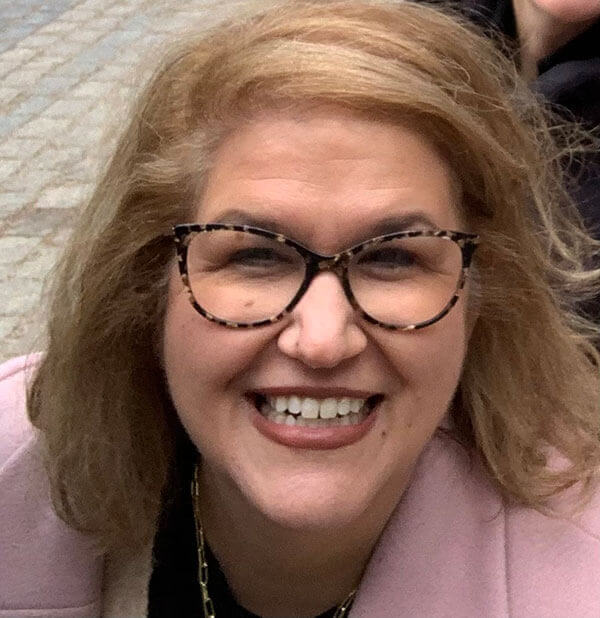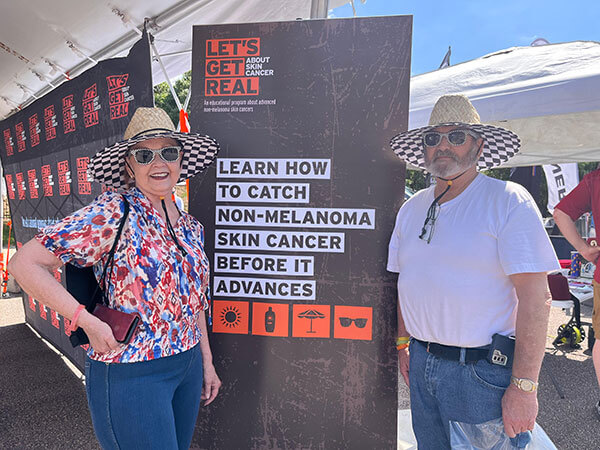Research & Preclinical Development
Let’s Get Real About Skin Cancer
October 01, 2024
Bringing Non-Melanoma Skin Cancer (NMSC) Education to the Racetrack
By: Andre Spring, Head of Global Oncology Marketing


Andre Spring,
Head of Global Oncology Marketing
Many people are surprised to find out that the most common form of cancer in the U.S. is skin cancer, which affects an estimated one in five Americans over the course of their lifetime.1 When they hear the term “skin cancer,” people tend to think of melanoma, but non-melanoma skin cancer (NMSC) is actually much more common.2
About NMSC
The two most common forms of NMSC are basal cell carcinoma (BCC) and cutaneous squamous cell carcinoma (CSCC). People at highest risk of these skin cancers include those who are over age 65, have a history of skin cancer, have light skin tones, and spend a lot of time in the sun. However, anyone can be diagnosed with skin cancer, regardless of these factors, which is why it is important to understand the risks and engage in prevention and detection strategies.3
I grew up in the South in an era that did not realize the importance of sun protection. My friends and I would spend our days basking in the sun, without any fear of the consequences. I now realize the risks that come with sun exposure, and I’m careful to take the proper precautions when I spend time outdoors, but many people unfortunately still lack education on this subject. I am proud that Regeneron is at the forefront of raising awareness of advanced NMSCs like BCC and CSCC and strives to clear up the misconceptions that so many have about this condition. I consider myself fortunate to be part of the company’s initiative to educate patients, caregivers and the general public about this important topic.
Let’s Get Real About Skin Cancer

For the past three years, Regeneron has run an educational program about advanced NMSCs called Let’s Get Real About Skin Cancer. This year, we were thrilled to take this program to the track by connecting with fans of race car driving at select high-profile race events throughout the summer, including the:
- Goodyear 400 at Darlington Raceway (May 11-12) in South Carolina
- Iowa Corn 350 at Iowa Speedway (June 15-16)
- Coke Zero Sugar 400 at Daytona International Speedway (August 23-24) in Florida
Racing is a sport with deep fan loyalty. Direct, on-site engagement with this fan base presented an ideal opportunity to reach individuals who may be at increased risk for BCC and CSCC due to factors such as age and participation in outdoor activities involving sun exposure.
We also complemented in-person activations with social media posts, editorial content and podcasts to help even more fans across the country and to share our website for more information.
According to the American Cancer Society, more than 5.4 million NMSC cases, such as BCC and CSCC, are diagnosed among 3.3 million people annually in the U.S.2 Both BCC and CSCC can become serious if they spread or advance locally.4 Programs like Let’s Get Real About Skin Cancer educate those possibly at risk for NMSCs so they can understand their risks and ensure a timely diagnosis and medical intervention, if needed.
I have personally seen the positive difference that early detection and treatment of NMSCs can make for patients. Hearing fans’ stories at the racetrack underscores how much work is still to be done in providing the general public with critical health information and resources. I hope more people learn about programs like Let’s Get Real About Skin Cancer so we can continue to educate about the risks of NMSCs at all stages — especially the dangers of advanced NMSCs — and encourage people to be vigilant about their skin health.

My colleague Taylor Skott, Product and Pipeline Communications Lead for the Let’s Get Real About Skin Cancer program, agrees. “It’s been incredible to see this program grow since its inception three years ago — both in scale and impact — ensuring we are reaching more people who are most at risk for NMSC in meaningful ways,” said Taylor. “People have been so open with their experiences and challenges in managing their skin health across our in-person and digital activations. They genuinely appreciate our support, which helps motivate them to take the next step in seeing a dermatologist for a skin check. These engagements also provide us with incredible insight that we use to refine and enhance future programming.”
At Regeneron, we are proud to walk alongside people who have been affected by advanced NMSCs — whether personally, or through the journey of a friend or loved one — and we encourage everyone to be proactive about skin care to reduce their risk of skin cancer. Visit LetsGetRealAboutSkinCancer.com to take the pledge to visit the dermatologist for a skin check.
References
- Skin Cancer Incidence Rates. American Academy of Dermatology Association. Published June 4, 2024. Accessed July 24, 2024. https://www.aad.org/media/stats-skin-cancer
- Basal & Squamous Cell Skin Cancer Statistics. American Cancer Society. Published October 31, 2023. Accessed July 24, 2024. https://www.cancer.org/cancer/types/basal-and-squamous-cell-skin-cancer/about/key-statistics.html
- Basal and Squamous Cell Skin Cancer Risk Factors | Skin Cancer Risks. American Cancer Society. Published October 31, 2023. Accessed July 24, 2024. https://www.cancer.org/cancer/types/basal-and-squamous-cell-skin-cancer/causes-risks-prevention/risk-factors.html
- What Are Basal and Squamous Cell Skin Cancers? American Cancer Society. Published October 31, 2023. Accessed September 16, 2024. https://www.cancer.org/cancer/types/basal-and-squamous-cell-skin-cancer/about/what-is-basal-and-squamous-cell.html